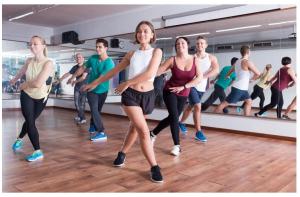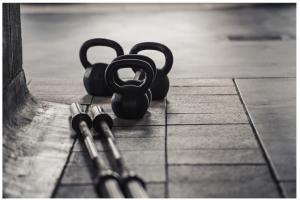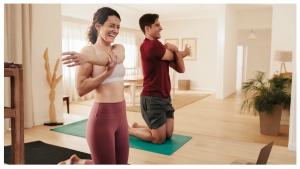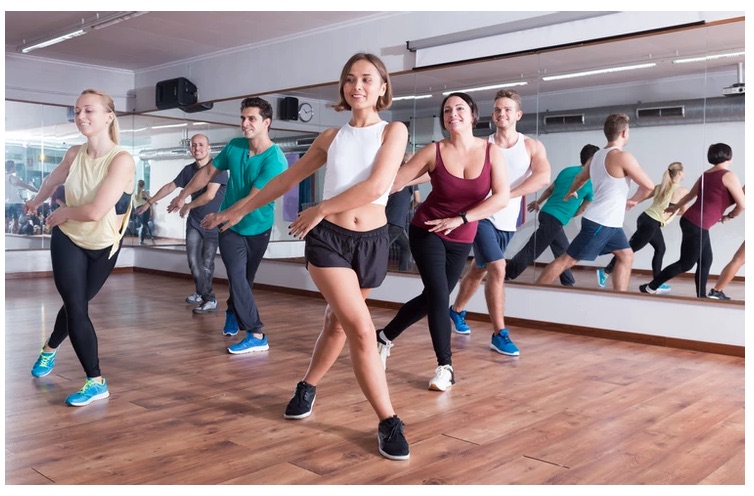Ever since I’ve re-launched this website, I started discussing Lifestyle Medicine and its six areas of focus. However, changing for the sake of living healthier seems daunting. Even the term “lifestyle change” tends to become a complicated message. There is this tendency to feel that you have to go extremes just to see and feel the difference or effects of the lifestyle change.
But that should not be the case.
As an Internal Medicine physician and an advocate of Lifestyle Medicine, I have been in this scenario. My husband and I felt that we had to do a radical change immediately as if it was a matter of life and death. But as we go along, we learned something and realized that the pace of lifestyle change is personal, therefore, subjective. Lifestyle change is not a one-size-fits-all method.
Also, as an Internal Medicine physician, I may be less equipped to advise you on your exercise regimen although I have a few professionals who specialize in exercise and fitness to help me. This is one of the reasons why Lifestyle Medicine is more collaborative rather than structured.
In this article, we will be discussing exercise not just a focus of Lifestyle Medicine but also a way to propel you to start changing to healthier living.
But before you embark on your exercise journey, be sure to consult your physician especially if you have risk factors such as cardiovascular diseases, smoking, high blood pressure, high cholesterol, diabetes, etc.
What is Exercise?
Exercise is defined as any activity that enhances or maintains physical fitness and overall health and wellness for various reasons. However, most people tend to focus on one type of exercise thinking that they are doing enough. Research has shown that a complete, safe, and effective exercise program should include endurance, strength, and flexibility. The reasons for this are each one has its own benefits, each can improve your ability to do the others, and variety helps reduce boredom and risk of injury.
Endurance (or Aerobic) Exercise
An aerobic exercise is any physical activity that uses large muscle groups in a continuous, rhythmic method over sustained periods of time during which causes the body to use more oxygen for increased cardiovascular endurance. That is why it is also called endurance exercise because this type of exercise helps you improve your staying power in keeping up with your activities of daily living. Examples of this kind of exercise include running, cycling, swimming, brisk walking, skipping rope, rowing, hiking, dancing, playing tennis, continuous training, long distance running, and other low-impact, weight-bearing exercises.

Strength Exercise
Strength exercise is any physical activity which often uses any form of resistance to induce muscular contraction. This in turn would build strength, anaerobic endurance, and size of skeletal muscles. Also called anaerobic exercise, this type of exercise can firm, tone, increase muscle mass, improve bone density, posture, balance, and coordination. Most weight management programs involve strength exercises. Examples are calisthenics, push-ups, pull-ups, lunges, squats, bench press, and weight-bearing exercises or training.

Flexibility Exercise
Flexibility exercise is any physical activity that uses a range of motion or the ability to move joints effectively through a complete range of motion. It includes mild stretching for 15 to 30 seconds while you breathe normally and should involve stretching for all of the major muscle groups like the arms, chest, back, stomach, hips, and legs to lengthen the muscles. Examples are swimming, cycling, yoga, Pilates, and other non-weight-bearing exercises.

Benefits
The health benefits of exercise depend on your goal, the type of exercise, and your age. People exercise for various reasons: improve health, prevent aging, develop muscles, hone athletic skills, for weight loss, and for enjoyment. Even doing a small amount of physical activity is better than doing nothing.
Exercise lifts your mood
Regular physical activity can relieve stress, anxiety, and depression. It provides a feel good sensation right after doing something.
Exercise keeps you physically fit
Exercise increases muscle strength which in turn increases your ability to function. Your body loses its strength and the ability to function properly without constant physical activity. An old saying goes, “You don’t stop moving from growing old, you grow old from stopping moving.”
Exercise helps keep the doctor away
Sitting for too long and other sedentary activities increase your risk of having a heart disease and stroke. According to a study, adults who watch more than four hours of television a day have 80% higher risk of dying from cardiovascular disease.
It just shows that being more active can help you lower your blood pressure, improve your blood circulation, keep your weight under control, helps you quit smoking or stay tobacco-free, prevent osteoporosis, helps you fall asleep faster and sleep soundly, etc. Imagine if you can add up all of these and equate them with your medical expenses in the future.
Exercise helps you live longer
Studies show that people who are physically active and with a healthy weight can live seven years more than those who are not active and obese. Staying physically active helps prevent diseases associated with aging or delay chronic diseases from coming. You could just imagine how exercise could maintain your quality of life as you age.
How Often or How Long Should You Exercise?
The American Heart Association and other fitness experts recommend at least 150 minutes a week of moderately intense physical activity. That could be equivalent to at least 30 minutes (or three 10-minute exercise sessions) a day for five days in a week for general health maintenance. If you are trying to lose weight, gradually work up to 45 minutes or longer at low to moderate intensities in a low- or non-impact activity for five to six days a week making sure that you take a day of rest at least once a week.
High-intensity exercise is fine only if you build up slowly and with proper supervision. Setting your exercise goals is a good way to start. Do not attempt to ramp up your exercise routine just for the sake of a challenge. Sometimes, it is better to take 15 to 20 minutes of intense weight-bearing exercise with hours of gap in between than taking one long session. Also varying the activities would take away boredom from the routine.
How to Get Started
Anyone of any age can do some type of physical activity. Deciding to become physically active is one of the best decisions you can do for your health. Exercise is not only for those who are healthy, though. People with chronic health conditions like heart disease, arthritis, chronic pain, high blood pressure, or diabetes can still still exercise. The National Institute on Aging recommends a few exercises for people with chronic conditions.
If you decide to begin exercising, here are a few tips:
- If you are over 45 years old, or have specific health conditions, consult your doctor and discuss your exercise plan.
- Start with low-intensity exercises slowly and keep your own pace. Increase gradually but do not rush with your exercise.
- Do not forget to warm up before exercising. Also, do not forget to cool down afterwards. Forgetting these two may cause your body to be sore.
- Wear appropriate, comfortable fitness clothes and shoes.
- Always rehydrate yourself by drinking water before, during, and after exercise even if you are not thirsty.
- Always go to the side of safety especially when exercising outdoors. Pay attention to your surroundings or equipment.
- Enjoy what you are doing.
Conclusion
Any physical activity that enhances fitness, health, and wellness is called an exercise. Even gardening is an exercise. Therefore, it would be best for you to move around rather than sit for hours doing nothing. You don’t have to make big life changes just to see the benefits of exercising. Start slowly and gradually build up your activity one step at a time.
If you are interested in starting an exercise program that would propel you to that lifestyle change, feel free to schedule a consultation. I will help and work with you to make changes at whatever pace you are comfortable with. There is a health program that might suit your needs. If you want to hear from me discuss more about Lifestyle Medicine, feel free to listen to my podcast. If you want to be updated with news and features from this website, subscribe to my newsletter or reach out at letedelita@gmail.com.
 Back to Blog Homepage
Back to Blog Homepage
